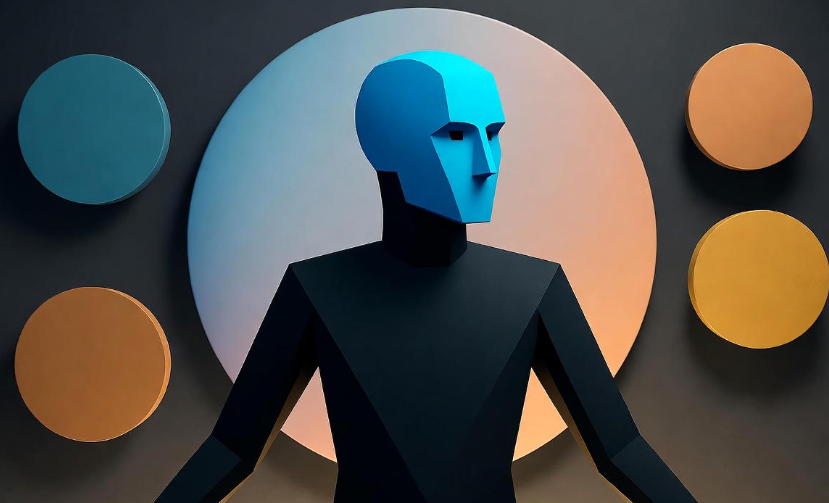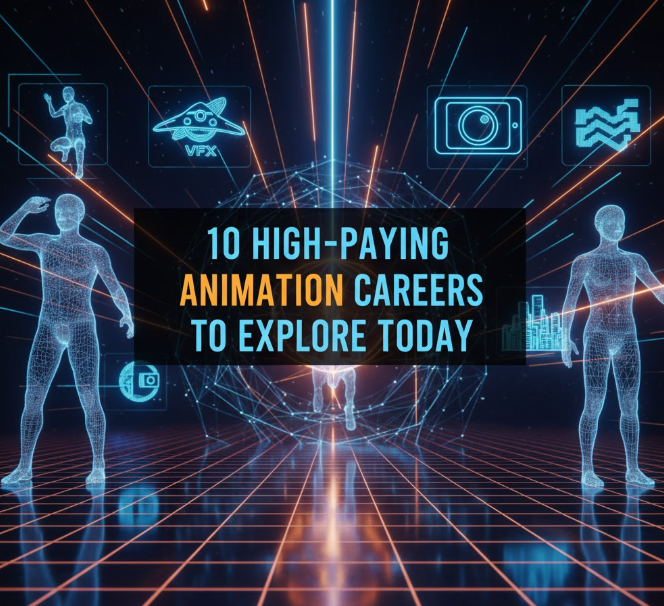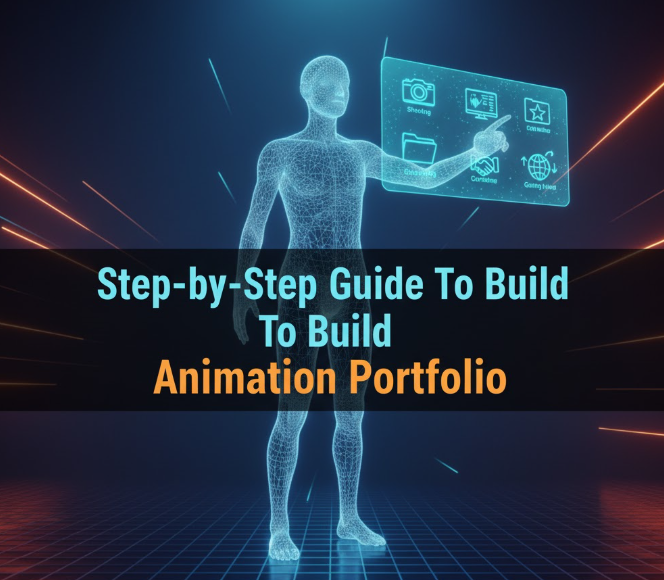Being an animator can feel magical — you bring imagination to life, frame by frame. But let’s be honest, sometimes the process gets tough. Long hours, tight deadlines, creative blocks, and that endless need for perfection can drain your energy fast. So, how do you stay motivated when your passion starts feeling like pressure? Let’s talk about some practical, honest, and human-tested ways to keep your motivation alive as an animator.
Remember Why You Started
When motivation drops, pause and think back to the beginning. Why did you choose animation? Was it because you love telling stories? Because you wanted to make characters move, feel, and breathe? Or maybe you just loved cartoons as a kid and thought, “I want to do that one day.”
Reconnecting with that first spark is powerful. It’s easy to get lost in client feedback or endless revisions, but when you remind yourself of your why, even a rough day feels meaningful again.
Here’s a simple exercise: write down the reason you started animating on a sticky note and place it near your workspace. Whenever you feel burned out, look at it. Sometimes that’s all the reminder you need.
Set Small, Realistic Goals
One huge mistake many animators make is trying to tackle a mountain all at once. Animation projects are massive — storyboarding, designing, keyframes, cleanup, rendering — it’s a lot. Instead of staring at the entire mountain, focus on one step at a time.
Set small daily or weekly goals. For example:
| Task | Estimated Time | Goal |
|---|---|---|
| Character sketch | 1 hour | Complete one pose |
| Scene blocking | 2 hours | Rough out movement |
| Clean-up animation | 3 hours | Finish one character |
When you finish each goal, check it off. That small act gives your brain a dopamine hit — it feels like progress, because it is. Over time, those little wins add up to big results.
Take Breaks Before You Break ♂️
Animation requires patience, focus, and constant creativity. Sitting for hours staring at a screen can wear down both your body and mind. It’s okay — no, it’s necessary — to step away for a bit.
Try the Pomodoro Technique:
Work for 25 minutes, then rest for 5. After four rounds, take a longer 15–20 minute break.
You’ll find that these short pauses not only prevent burnout but also refresh your creativity. During breaks, stretch your body, hydrate, or even go outside for a minute. You’ll come back to your work with new energy — and maybe new ideas.
Celebrate Progress, Not Just Perfection
Many animators fall into the perfection trap. You tweak one frame endlessly, hoping it’ll look flawless. But here’s the truth: animation is never perfect — it’s expressive. It’s emotion in motion.
So instead of focusing only on how far you have to go, celebrate how far you’ve come. Finished a difficult scene? Treat yourself to something small — a snack, a walk, or watching your favorite show guilt-free.
Motivation thrives when you feel good about what you’ve achieved. Remember: your journey matters as much as your destination.
Surround Yourself With Creative Energy
When you’re surrounded by creative people — even virtually — it’s easier to stay inspired. Join online animation communities, attend workshops, or participate in animation challenges. Seeing other artists’ progress can give you fresh ideas and push you to improve.
You can even find an “animation buddy” — someone you share updates with, swap feedback, and motivate each other on bad days.
Also, don’t limit your inspiration to just animation. Watch films, read comics, study photography, or listen to music. Creativity often sparks when different art forms collide.
Keep Learning Something New
One of the fastest ways to lose motivation is boredom. When you’re stuck doing the same thing every day, the excitement fades. The cure? Keep learning.
Maybe it’s a new animation style, a different software, or just improving your drawing fundamentals. There’s always something new in the world of animation — from 2D hand-drawn techniques to AI-assisted workflows.
Learning keeps your brain fresh and curious. And curiosity is the heart of motivation.
Balance Work and Personal Life ⚖️
It’s easy to let your work consume you, especially if animation is both your passion and profession. But remember — even passionate people need rest. Overworking yourself doesn’t lead to better art; it leads to exhaustion.
Set boundaries. Once you finish your workday, disconnect. Watch a movie, hang out with friends, play games, or just relax. Creativity needs space to breathe, and rest is part of that process.
Use Music or Sound to Stay in Flow
Sound affects focus more than we think. Many animators use background music or ambient sounds to stay in a creative zone. Try playlists designed for deep work, lo-fi beats, or even the sound of rain.
Experiment a little — you’ll find what makes your brain click into focus mode. For some, it’s calm background tunes; for others, it’s silence.
Reward Yourself for Finishing Tasks
Motivation grows stronger when your mind associates work with reward. So build small rewards into your routine.
Example:
-
After finishing a complex animation scene → grab a coffee ☕
-
After completing a client project → buy something you’ve been wanting ️
-
After meeting a big deadline → take a mini-vacation ️
It doesn’t have to be fancy — just something that tells your brain: Good job. You earned it.
Keep Your Workspace Inspiring ️
Your environment affects your mood. A cluttered, boring desk can make you feel drained before you even start. Try adding personal touches — a poster, some plants, sticky notes with goals, or even your favorite action figure.
Keep things tidy and visually pleasing. When your space feels creative, you’ll feel creative.
Handle Creative Blocks with Kindness, Not Pressure
Every animator faces creative blocks — days when nothing seems right. Instead of forcing yourself through frustration, try shifting gears.
Do a warm-up doodle, animate something silly, or revisit an old project. Sometimes, the best ideas come when you stop overthinking. Remember, creativity is like a muscle — it needs both exercise and rest.
Visualize the Final Result
When motivation dips mid-project, close your eyes for a moment and imagine your finished animation — the movement, the colors, the satisfaction of watching it play smoothly. That mental image can reignite your drive.
Visualization isn’t just daydreaming; it’s a technique athletes and artists use to boost focus and determination.
Don’t Compare, Learn Instead
It’s easy to scroll through social media, see other animators’ work, and think, “I’ll never be that good.” But everyone’s timeline is different. What you’re seeing is their highlight reel, not their behind-the-scenes struggle.
Instead of comparing, try to learn. Ask:
-
What techniques did they use?
-
How did they handle movement or lighting?
-
Can I try that style for fun?
The moment you shift from comparison to curiosity, motivation comes back.
Stay Physically Healthy
Animation can be hard on your body — long hours at a desk, constant screen time, and little movement. But physical health is tightly connected to mental energy.
Try simple habits like:
-
Stretching every hour
-
Drinking enough water
-
Taking short walks
-
Getting enough sleep
Even 15 minutes of exercise daily can lift your mood and make your mind more alert. Remember, healthy animators make better animations.
Keep a “Motivation Folder”
This is a simple yet powerful trick. Create a folder — digital or physical — filled with things that inspire you:
-
Old projects you’re proud of
-
Positive client feedback
-
Art or animation references that excite you
-
Quotes that motivate you
Whenever you feel stuck, open it. It’s like a personal energy boost made of your own progress.
Be Patient With Growth
Great animators weren’t born overnight. Every expert you admire once struggled with the same mistakes you’re making now. Growth takes time, consistency, and patience.
-
Before you finish, check this one: 10 High-Paying Animation Careers to Explore Today
Don’t rush. Keep practicing. Every frame you draw adds to your skill. Motivation lasts longer when you stop focusing on how far you are and start appreciating how far you’ve come.

FAQs ❓
Q1: What if I completely lose interest in animation?
It happens. Take a short break. Step away and explore other creative outlets like photography, writing, or music. When you come back, you might rediscover your passion with fresh eyes.
Q2: How do I deal with clients who demotivate me?
Set clear boundaries. Remember, client feedback is not a reflection of your worth. Learn to take constructive criticism and ignore unhelpful negativity.
Q3: How can I find inspiration for new ideas?
Observe the world around you — movement, nature, people, emotions. Sometimes, the smallest detail (like a leaf blowing in the wind) can inspire an entire scene.
Q4: Is burnout common for animators?
Absolutely. It’s one of the most common issues in creative fields. The key is recognizing the signs early — fatigue, frustration, lack of interest — and taking time to rest before it gets worse.
Q5: What’s the best daily routine for animators?
Try to structure your day with a mix of work, rest, and learning. A sample routine might look like this:
| Time | Activity |
|---|---|
| 9:00 AM | Warm-up sketches |
| 10:00 AM | Animation work |
| 12:00 PM | Short break & lunch |
| 1:00 PM | Continue project |
| 3:00 PM | Learning session or tutorial |
| 5:00 PM | Wrap up & review |
| Evening | Relax or personal art |
Final Thoughts
Staying motivated as an animator isn’t about constant energy — it’s about finding balance. Some days, you’ll feel unstoppable; other days, you’ll barely want to open your software. And that’s okay. Motivation is like animation itself — it flows, it changes, it needs movement.
Just remember: your creativity is a gift, not a race. Keep your passion alive by caring for both your art and yourself. Every frame you draw is a step forward. Keep going — your best work is still ahead of you.




